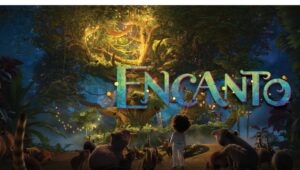A few weeks ago, I came across some ’80s Russian pop-rock songs and was instantly transported back to my childhood. These were the songs that my parents played in the car, the ones that woke me up on Sunday mornings, the first albums on my fourth-grade MP3 player. I was overjoyed but also overwhelmed with sadness and longing, realizing that I had become an easy victim of the charitable nostalgia triggers of Spotify.
The beauty of nostalgia is its elusiveness––it can’t be confined to the categories of positive or negative emotion. Unlike anger or joy, it’s often a mix of both warm, happy feelings and deep melancholy. But sometimes wistful remembrance is more sweet than bitter, especially when it’s collective. Looking through old photos is easier when you’re with the people who are in them, and recalling a painful class is funnier when your former classmates are there to share the memories.
Part of the sadness in nostalgia is the realization that whatever you’re remembering is confined to the past, that it will never replay in the same way. The communal nostalgic experience, however, alleviates this problem, convincing us that because we’re looking back on the same events, they live on in our shared consciousness. The validation of our own memories by other people can make them more pleasant to reflect on, more real. Social approval can affirm and even alter our perception of reality, and its effect on nostalgia is no different.
The collective experience of nostalgia has flourished in the age of social media. Platforms like Twitter and Tumblr are home to viral tidbits of relatable childhood moments: reminiscing about favorite snacks, movies, and weirdly specific perils like forgetting to take the chicken out of the freezer before your mom comes home. These posts are ultimate internet wholesomeness, sparking social connection and bonding between fellow millennial strangers.
In a less wholesome response, technological titans have started to formally automate nostalgia by commodifying it. Facebook offers yearly reminders of pictures, statuses, and the beginnings of virtual friendships; Google Photos sends weekly emails encouraging you to “Rediscover this day one year ago”; and Spotify annually compiles a list of the music you listened to last year.
And don’t forget wrung-out franchises like Star Wars that refuse to quietly retire into the world of memorabilia and Netflix movie marathons. What else but the sweet, sweet profitability of nostalgia could make Hollywood repeatedly hire new actors to beat the same cliché plot to death? As if that wasn’t enough, nearly every year for the past five years, Disney has been announcing reboots for every childhood film they can think of, from Beauty and the Beast to the Lion King to Mulan.
Musical artists also seek to evoke our longing for the past. Take Ariana Grande’s recent hit, “Thank U, Next,” a song about moving on from breakups and prioritizing yourself over men. Its music video pays tribute to four teen comedies from the early 2000s, only one of which (Legally Blonde) actually corresponds to the topic of the song—the rest were solely selected for their nostalgia factor. As expected, people ate it up.
The experience of nostalgia usually requires a trigger—something that sparks our memories of the picturesque past. Movies, songs, and photos, all of which are now accessible to us in an unprecedented volume, prove to be the perfect memory joggers and also the perfect mediums for brands to use for their own agendas.
Of course, melancholic rumination about the past is not necessarily bad. Nostalgia can inspire people to create beautiful art and literature, and from a psychological standpoint, studies show that it can help them feel more connected to their loved ones, strengthen their sense of self, and make life transitions smoother. And when experienced collectively, it’s arguably even better. I often feel lonely in the process of my own nostalgia because not many of my friends share my cultural heritage, and when I have the chance to reminisce with those who do, it’s a joyful and special moment.
But what happens to nostalgia when it’s capitalized and automated? Social media, especially for younger generations, is a platform for carefully curated versions of the self. Thus, the “On This Day” posts regurgitated on Facebook and the collages of old pictures on an Instagram feed aren’t really memories–they’re carefully picked tidbits of a persona created in a virtual space, representing only the most attractive and attention-grabbing aspects of ourselves. While brands have always exploited emotional responses for profit, now Twitter, Facebook, and Instagram encourage individuals to do the same by bringing in social currency in the form of retweets and likes.
These exaggerated people-brands can’t possibly be as multifaceted and complex as the identity of a real person, yet the “memories” they display become a crucial part of how we understand our own self-concept. Memorializing yourself as the ideal, neatly packaged person you are online complicates the process of personal growth. How can we envision and work towards the future when the curated past keeps popping up and obstructing the view?
But corporations that try to imbue us with their own version of collective nostalgia represent a different and arguably even bigger monster than the personal memory-mining of Google Photos and Facebook. The constant bombardment of Disney reboots, popular toys, and “vintage” products creates the dangerous idea that our warm memories, and thus parts of our identity, must be tied to things available for purchase. Bonding over having seen the same mass-market cartoon is easy and immediate, but it ultimately makes shared nostalgia less personal and unique.
The entire farce culminates in the garish façades of Disney World, where adults can, and do, pay $100 to wait in lines, ride mediocre roller coasters, and interact with princesses and fictional mice while being fully aware that they are actually minimum-wage workers. Around 5,000 people a year go a step further and get married there, letting the voracious behemoth of corporate nostalgia guzzle anywhere from $3,500 to $180,000 from their bank accounts.
It’s impossible to divorce all of our memories from material things, but there is a difference between finding nostalgia in personal objects and having it spoon-fed to us by corporations looking to profit. There is an uncomfortably coercive current running through franchises that insist on reminding us what our childhood memories are and should be.
Nostalgia is a personal, complex, and delicate experience that evokes the ephemeral nature of every moment in our lives. To corrupt it with computerized permanence and corporate greed is to strip it of its ethereal beauty.





